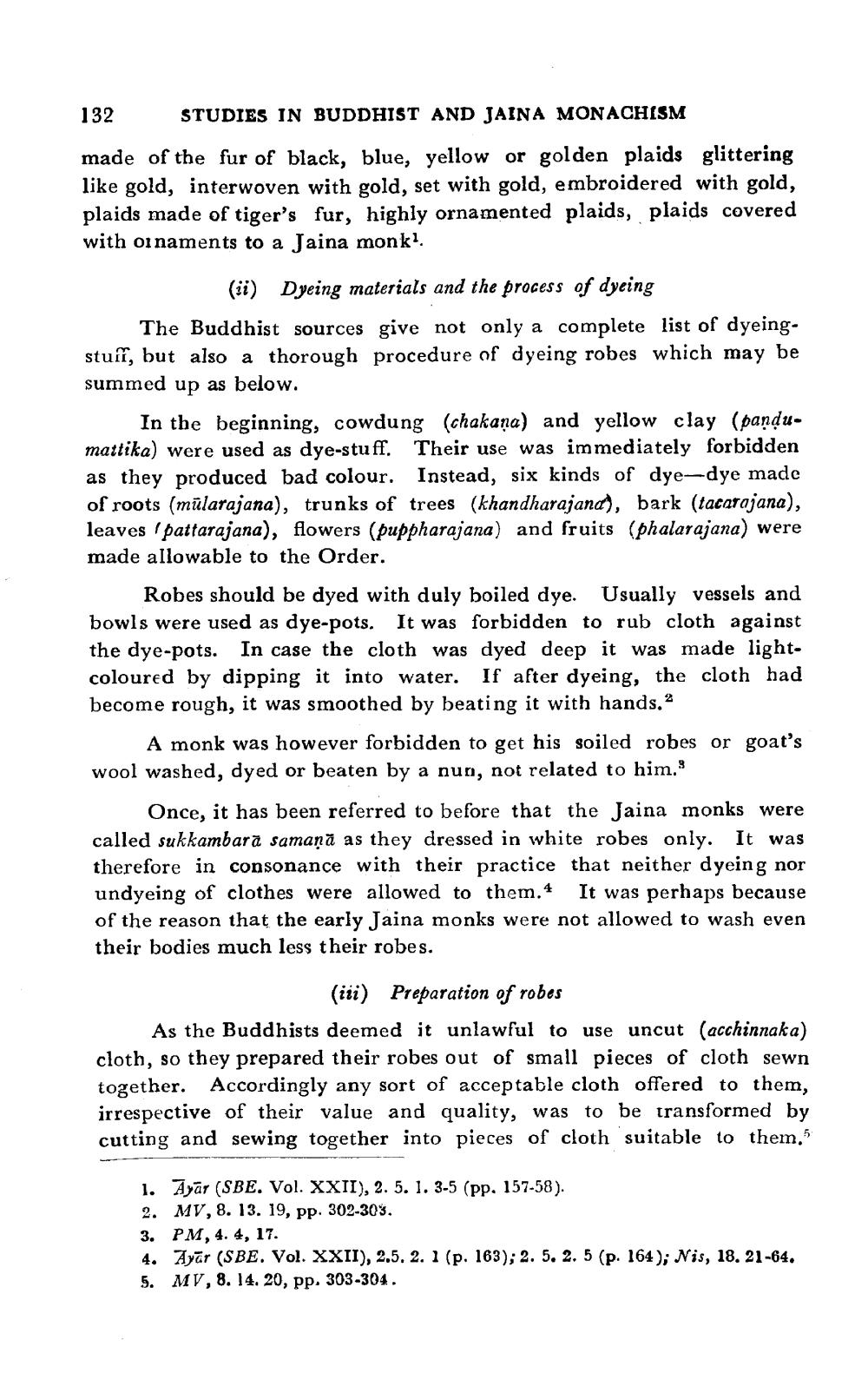________________
132
STUDIES IN BUDDHIST AND JAINA MONACHISM
made of the fur of black, blue, yellow or golden plaids glittering like gold, interwoven with gold, set with gold, embroidered with gold, plaids made of tiger's fur, highly ornamented plaids, plaids covered with ornaments to a Jaina monk1.
(ii) Dyeing materials and the process of dyeing
The Buddhist sources give not only a complete list of dyeingstuff, but also a thorough procedure of dyeing robes which may be summed up as below.
In the beginning, cowdung (chakana) and yellow clay (pandumattika) were used as dye-stuff. Their use was immediately forbidden as they produced bad colour. Instead, six kinds of dye-dye made of roots (mularajana), trunks of trees (khandharajana), bark (tacarajana), leaves 'pattarajana), flowers (puppharajana) and fruits (phalarajana) were made allowable to the Order.
Robes should be dyed with duly boiled dye. Usually vessels and bowls were used as dye-pots. It was forbidden to rub cloth against the dye-pots. In case the cloth was dyed deep it was made lightcoloured by dipping it into water. If after dyeing, the cloth had become rough, it was smoothed by beating it with hands.
A monk was however forbidden to get his soiled robes or goat's wool washed, dyed or beaten by a nun, not related to him."
Once, it has been referred to before that the Jaina monks were called sukkambara samaṇā as they dressed in white robes only. It was therefore in consonance with their practice that neither dyeing nor undyeing of clothes were allowed to them.4 It was perhaps because of the reason that the early Jaina monks were not allowed to wash even their bodies much less their robes.
(iii) Preparation of robes
As the Buddhists deemed it unlawful to use uncut (acchinnaka) cloth, so they prepared their robes out of small pieces of cloth sewn together. Accordingly any sort of acceptable cloth offered to them, irrespective of their value and quality, was to be transformed by cutting and sewing together into pieces of cloth suitable to them.5
1. Ayar (SBE. Vol. XXII), 2. 5. 1. 3-5 (pp. 157-58).
2. MV, 8. 13. 19, pp. 302-30%.
3. PM, 4. 4, 17.
4. Ayar (SBE. Vol. XXII), 2.5. 2. 1 (p. 163); 2. 5. 2. 5 (p. 164); Nis, 18. 21-64. 5. MV, 8. 14. 20, pp. 303-304.




